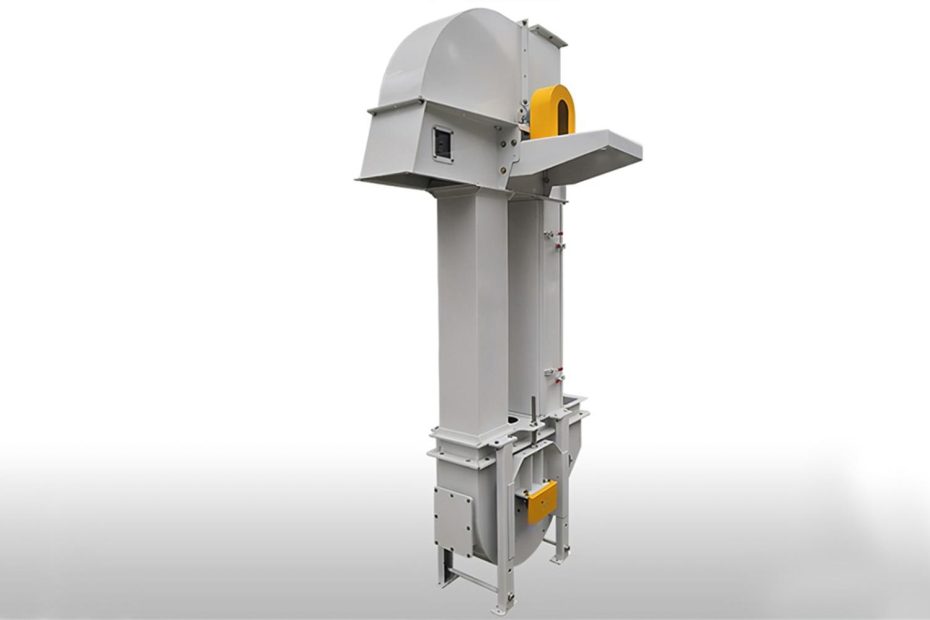In the realm of material handling, efficiency and reliability are paramount. Two common methods for transporting bulk materials are bucket elevators and screw conveyors. Each has its strengths and weaknesses, making them suitable for different applications. This article aims to explore and compare these two mechanisms, delving into their design, operation, advantages, and limitations.
Design and Operation : Bucket elevator vs. screw conveyor
- Bucket Elevators:Bucket elevators consist of a series of buckets attached to a belt or chain loop. As the belt or chain moves, the buckets scoop up the material from the bottom and carry it to the top, where it is discharged. The design typically includes a drive mechanism, head section, boot section, and casing to enclose the buckets.
- Screw Conveyors:Screw conveyors utilize a helical screw blade to move materials along a trough. The rotation of the screw pushes the material forward within the casing, ultimately discharging it at the desired location. Screw conveyors come in various configurations, including horizontal, inclined, and vertical, to accommodate different material flow requirements.

Efficiency comparison : Bucket elevator vs. screw conveyor
Bucket Elevators:
- Suitable for vertical transportation of bulk materials.
- Can handle materials with varying particle sizes and consistencies.
- Higher capacity compared to screw conveyors for vertical lifts.
Screw Conveyors:
- Ideal for horizontal or inclined transportation over shorter distances.
- Limited in capacity for vertical conveying compared to bucket elevators.
- Generally more energy-efficient for horizontal or inclined applications.
Advantages and Limitations : Bucket elevator vs. screw conveyor
Advantages
Bucket Elevators:
- Efficient for vertical transportation.
- Can handle a wide range of materials.
- Minimal spillage and dust emissions.
- Compact footprint for space-saving installations.
Screw Conveyors:
- Versatile for various orientations (horizontal, inclined, vertical).
- Simple design with fewer moving parts.
- Cost-effective for shorter conveying distances.
- Gentle handling of materials, suitable for fragile or abrasive substances.
Limitations
Bucket Elevators:
- Limited to vertical conveying, not suitable for horizontal transportation.
- Higher initial investment costs compared to screw conveyors.
- Require regular maintenance of belts, buckets, and drive components.
Screw Conveyors:
- Limited capacity for vertical lifts.
- Prone to material buildup and blockages, especially with sticky or cohesive materials.
- Less efficient for high-capacity, vertical transportation compared to bucket elevators.

Application Examples : Bucket elevator vs. screw conveyor
To illustrate the suitability of each mechanism, consider the following scenarios:
Bucket Elevators
- Transporting grains or aggregates to storage silos in a vertical configuration.
- Handling bulk materials in processing plants where vertical lifting is necessary.
Screw Conveyors
- Moving powdered materials in a horizontal or inclined setup within a production facility.
- Feeding materials into packaging machines or mixing equipment.
Considerations for Selection : Bucket elevator vs. screw conveyor
When deciding between a bucket elevator and a screw conveyor, several factors must be taken into account:
- Material Characteristics: Consider the particle size, abrasiveness, and flow properties of the material to determine the most suitable mechanism.
- Conveying Distance and Orientation: Evaluate whether the application requires vertical lifting or horizontal/ inclined transportation and choose accordingly.
- Capacity Requirements: Assess the required throughput and select the mechanism capable of meeting those demands efficiently.
- Maintenance and Operating Costs: Factor in the initial investment, maintenance requirements, and energy consumption over the lifespan of the equipment.
Conclusion
In conclusion, both bucket elevators and screw conveyors offer distinct advantages and limitations in material handling applications. While bucket elevators excel in vertical transportation and can handle a wide range of materials, screw conveyors are versatile and cost-effective for horizontal or inclined conveying over shorter distances.
The selection between the two depends on various factors, including material characteristics, capacity requirements, and operational considerations. By understanding the strengths and weaknesses of each mechanism, businesses can make informed decisions to optimize their material handling processes.
